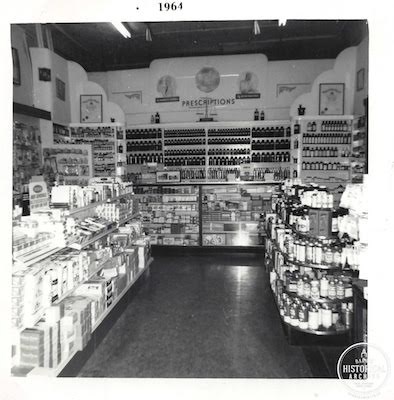As Charles Hinds was very unwell but fully conscious when the doctors and the priest arrived at his home, the men were able to question him about what had occurred during the course of the day. Hinds explained that he had started to feel sick the day before, and by about 6 p.m. on the present evening still felt unwell. As he had orders to pick up in Allandale the next morning, Hinds decided to take some rhubarb mixture and go to bed early.
In the 1800s, rhubarb tincture (a blend of rhubarb and alcohol) was a favourite cure-all for various digestive complaints. The family told the men in attendance that Charles Hinds took a rhubarb mixture that he had purchased from Monkman’s Drug Store quite regularly, never measuring it, and just taking it directly from the bottle.
When Hinds started to feel even worse, he banged on the floor to alert his family. He told his daughter that his stomach was really bothering him so the girl and her mother lifted him up in bed and administered yet another remedy – a mustard and water mixture. He continued to deteriorate.
The priest asked Hinds what he had done with the bottle of rhubarb mixture and the patient replied that he had finished the medicine and thrown the empty bottle away outside. Hinds’ son was sent outside to look for it.
When the young man returned, he told the priest and the doctors that he couldn’t find the rhubarb mixture bottle but did find an empty strychnine bottle. This was shown to Charles Hinds who denied that this was the bottle he had taken medication from.
The next question asked was about the usual location of any strychnine in the house. The younger Hinds replied that it was kept upon a shelf along with some horse liniment and the rhubarb mixture. Inspection of the shelf verified the horrifying truth – the rhubarb mixture was in its usual place and the strychnine was missing.
When all of this was presented by the witnesses at the coroner’s inquest led by Dr. Wells, it didn’t take very long for the jurors to come to a conclusion. Friend, fellow Dunlop Street merchant and jury foreman, J.M. Bothwell, read out the verdict.
“From the evidence adduced the deceased, Charles Hinds’ death was caused by taking a poisonous drug in a mistake for medicine regularly taken by him and that the blame is attached to no person.”
To read Part 1 of this series, please click here.
Each week, the Barrie Historical Archive provides BarrieToday readers with a glimpse of the city’s past. This unique column features photos and stories from years gone by and is sure to appeal to the historian in each of us.

